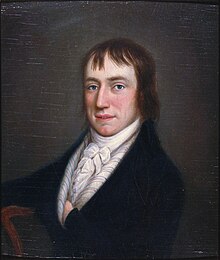
دنیای زبان انگلیسی ( بهروزپور )
لغات و اصطلاح .داستان کوتاه . شعر.جوک .ضرب المثل.اشپزی.رمان. نمایشنامه.متن دوزبانه
دنیای زبان انگلیسی ( بهروزپور )
لغات و اصطلاح .داستان کوتاه . شعر.جوک .ضرب المثل.اشپزی.رمان. نمایشنامه.متن دوزبانهMariana Trench:گودال ماریانا عمیق ترین گودال جهان
The Mariana Trench is the deepest part of the world's oceans, and the lowest elevation of the surface of the Earth's crust. It is located in the western Pacific Ocean, to the east of the Mariana Islands. The trench is about 2,550 kilometres (1,580 mi) long but has a mean width of only 69 kilometres (43 mi). It reaches a maximum-known depth of about 11.03 kilometres (6.85 mi) at the Vityaz-1 Deep and about 10.91 kilometres (6.78 mi) at the Challenger Deep, a small slot-shaped valley in its floor, at its southern end.[1] If Mount Everest, the highest mountain on Earth at 8,848 metres (29,029 ft), were set in the deepest part of the Mariana Trench, there would be 2,076 metres (6,811 ft) of water left above it.[2]
Part of the Izu-Bonin-Mariana Arc system trenches forms the boundary between two tectonic plates, where the western edge of the Pacific Plate is subducted beneath the small Mariana Plate. Because the Pacific plate is the largest of all the tectonic plates on Earth, crustal material at its western edge has had a long time since formation (up to 170 million years) to compact and become very dense; hence its great height-difference relative to the higher-riding Mariana Plate, at the point where the Pacific Plate crust is subducted. This deep area is the Mariana trench proper. The movement of these plates is also responsible for the formation of the Mariana Islands.
At the bottom of the trench, where the plates meet, the water column above exerts a pressure of 1,086 bars (15,750 psi), over one thousand times the standard atmospheric pressure at sea level.
Because the Earth is not a perfect sphere, the trench is not the part of the seafloor closest to the center of the Earth - parts of the Arctic Ocean seabed are at least 13,000 metres closer to the center than the Challenger Deep seafloor
.
Sohrab Sepehri
ohrab Sepehri (Persian: سهراب سپهری) (October 7, 1928 - April 21, 1980) was a notable modern Persian poet and a painter.
He was born in Kashan in Isfahan province. He is considered to be one of the five most famous modern Persian (Iranian) poets who have practised "New Poetry" (a kind of poetry that often has neither meter nor rhyme). Other practitioners of this form were Nima Youshij, Ahmad Shamlou, Mehdi Akhavan-Sales, and Forough Farrokhzad.
Sohrab Sepehri was also one of Iran's foremost modernist painters.
Sepehri died in Pars hospital in Tehran of leukemia. His poetry is full of humanity and concern for human values. He loved nature and refers to it frequently. The poetry of Sohrab Sepehri bears great resemblance to that of E.E. Cummings.
Well-versed in Buddhism, mysticism and Western traditions, he mingled the Western concepts with Eastern ones, thereby creating a kind of poetry unsurpassed in the history of Persian literature. To him, new forms were new means to express his thoughts and feelings.
اشپزی
r.
| About this Recipe: A very quick and healthy fruit salad breakfast. You can add some granola to this recipe as well. |
Plain or vanilla yogurt: 2 cups
Low-fat sour cream: 1/2 cup
Pineapple juice: 1/2 cup
Fresh lemon juice: 1/4 cup
Honey: 1/4 cup
Fresh fruits: 5 cups
Frozen blueberries: 1-2 cups, thawed
Directions:
1. Mix the first 5 ingredients together in a large bowl.
2. Add cut-up fruits in any mix you like - apples, bananas, oranges, pineapple, grapes - whatever mix you like - about 5 cups total.
3. Lastly, add berries and stir the mixture togethe
William Wordsworth
William Wordsworth (7 April 1770 – 23 April 1850) was a major English Romantic poet who, with Samuel Taylor Coleridge, helped to launch the Romantic Age in English literature with the 1798 joint publication Lyrical Ballads.
Wordsworth's magnum opus is generally considered to be The Prelude, a semiautobiographical poem of his early years which he revised and expanded a number of times. It was posthumously titled and published, prior to which it was generally known as the poem "to Coleridge." Wordsworth was Britain's Poet Laureate from 1843 until his death in 1850.
First publication and Lyrical Ballads
In his "Preface to Lyrical Ballads", which is called the "manifesto" of English Romantic criticism, Wordsworth calls his poems "experimental." The year 1793 saw Wordsworth's first published poetry with the collections An Evening Walk and Descriptive Sketches. He received a legacy of £900 from Raisley Calvert in 1795 so that he could pursue writing poetry. That year, he met Samuel Taylor Coleridge in Somerset. The two poets quickly developed a close friendship. In 1797, Wordsworth and his sister Dorothy moved to Alfoxton House, Somerset, just a few miles away from Coleridge's home in Nether Stowey. Together, Wordsworth and Coleridge (with insights from Dorothy) produced Lyrical Ballads (1798), an important work in the English Romantic movement. The volume gave neither Wordsworth's nor Coleridge's name as author. One of Wordsworth's most famous poems, "Tintern Abbey", was published in the work, along with Coleridge's "The Rime of the Ancient Mariner". The second edition, published in 1800, had only Wordsworth listed as the author, and included a preface to the poems, which was augmented significantly in the 1802 edition. This Preface to Lyrical Ballads is considered a central work of Romantic literary theory. In it, Wordsworth discusses what he sees as the elements of a new type of poetry, one based on the "real language of men" and which avoids the poetic diction of much eighteenth-century poetry. Here, Wordsworth gives his famous definition of poetry as "the spontaneous overflow of powerful feelings: it takes its origin from emotion recollected in tranquility." A fourth and final edition of Lyrical Ballads was published in 1805.
ادامه مطلب ...Geoffrey Chaucer
Geoffrey Chaucer (pronounced /ˈtʃɔːsər/; c. 1343 – 25 October 1400) was an English author, poet, philosopher, bureaucrat, courtier and diplomat. Although he wrote many works, he is best remembered for his unfinished frame narrative The Canterbury Tales. Sometimes called the father of English literature, Chaucer is credited by some scholars as the first author to demonstrate the artistic legitimacy of the vernacular Middle English, rather than French or Latin.
ادامه مطلب ...Great Wall of China
The Great Wall of China is a series of stone and earthen fortifications in northern China, built originally to protect the northern borders of the Chinese Empire against intrusions by various nomadic groups. Several walls have been built since the 5th century BC that are referred to collectively as the Great Wall, which has been rebuilt and maintained from the 5th century BC through the 16th century. One of the most famous is the wall built between 220–206 BC by the first Emperor of China, Qin Shi Huang. Little of that wall remains; the majority of the existing wall was built during the Ming Dynasty.
اثار شکسپیر
| The Complete Works of William Shakespeare |
ادامه مطلب ...
Welcome to the Web's first edition of the Complete Works of William Shakespeare. This site has offered Shakespeare's plays and poetry to the Internet community since 1993.For other Shakespeare resources, visit the Mr. William Shakespeare and the Internet Web site.
The original electronic source for this server was the Complete Moby(tm) Shakespeare. The HTML versions of the plays provided here are placed in the public domain.
(عروس دریایی)Jellyfish
Jellyfish (also known as jellies or sea jellies or Medusozoa) are free-swimming members of the phylum Cnidaria. Jellyfish have several different morphologies that represent several different cnidarian classes including the Scyphozoa (over 200 species), Staurozoa (about 50 species), Cubozoa (about 20 species), and Hydrozoa (about 1000–1500 species that make jellyfish and many more that do not).[1][2] Medusa is another word for jellyfish, and refers specifically to adult jellyfish.
Jellyfish are found in every ocean, from the surface to the deep sea. Some hydrozoan jellyfish, or hydromedusae, are also found in fresh water; freshwater species are less than an inch (25 mm) in diameter, are colorless and do not sting. Many of the best-known jellyfish, such as Aurelia, are scyphomedusae. These are the large, often colorful, jellyfish that are common in coastal zones worldwide.
In its broadest sense, the term jellyfish also generally refers to members of the phylum Ctenophora. Although not closely related to cnidarian jellyfish, ctenophores are also free-swimming planktonic carnivores, are generally transparent or translucent, and exist in shallow to deep portions of all the world's oceans.
Alternative names for groups of jellyfish are scyphomedusae, stauromedusae, cubomedusae, and hydromedusae. These may relate to an entire order or class.
ادامه مطلب ...

